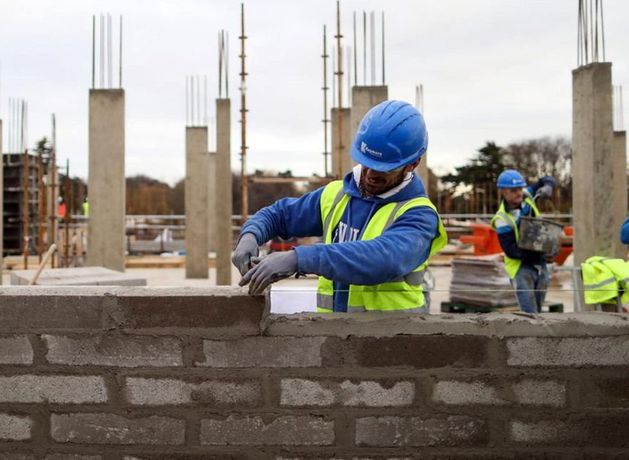Figure comes despite recent house build data sparking fears Government’s 33,450 target may be missed
In late July, figures by the Central Statistics Office sparked fears in the industry that the State’s Housing For All target for 2024 of 33,450 homes was at significant risk of being missed.
The CSO found that the number of new home completions was down 8.6pc in the first six months to 12,370, meaning over 21,000 homes would need to be built to hit the target.
In a report by Deutsche Numis Research (the research arm of Deutsche Bank), analysts said they thought housing “completions this year will be well in excess of 40,000 units.”
Asked about the figure, Jonathan Coubrough, an analyst at Deutsche Numis Research and the report’s co-author, cited a surge in house starts over the last 12 months. In the first six months of the year, commencements more than doubled to 33,700.
The report estimated that just under 70pc of completions in 2023 were by developers who had completed under 150 units. Above, the Kinsealy Woods development
While he said he didn’t expect the commencements to all complete within a 12-month period, he believed it seems “realistic to expect that completions should reach government targets in the coming years if the growth in housing starts is sustainable”.
The Deutsche Numis Research analysts focused on two of Ireland’s listed housebuilders, Cairn Homes and Glenveagh.
The report noted the “highly fragmented” nature of the Irish housebuilding market and said there was “plenty of scope for market-share growth” for Cairn and Glenveagh. It said the two listed companies only contributed around 12pc of national housing output.
In the UK, the researchers claimed that listed housing companies such as Persimmon, Taylor Wimpey and Barratt Developments built around 40pc of houses.
The report estimated that around 70pc of Irish housing completions in 2023 were by developers who had completed under 150 units in the year. These smaller developers lacked “the scale of equity-led national builders”.
In response to questions, Coubrough said growing house starts followed housebuilders making significant investments over several years. It was also a response to a high level of demand for housing and “supportive policy measures”.
“We therefore expect the Irish housebuilders to start to generate attractive returns from the high levels of investment they have made to grow output over several years.
The analysts focused on two of Ireland’s listed housebuilders, Cairn Homes and Glenveagh
“Both Cairn Homes and Glenveagh Properties target 15pc return on equity a year. We view this to be a sustainably attractive return for what is a capital-intensive industry, but it is still significantly below the returns generated by UK housebuilders pre-Covid.”
Coubrough added that structural undersupply “remains the defining feature of the Irish housing market”. It was important for the sector to prove the growth in commencements was “sustainable”.
“We think this will require ongoing high levels of investment by companies in the sector and a partnership approach with the public sector. Early signs of progress are encouraging in delivering the much-needed growth in housing output.”
Researchers said the upcoming election could be a risk if it resulted in changes to the ‘very supportive’ Housing For All agenda
The report said that factors bolstering the Irish housebuilding sector included supportive state policies on the demand side, such as Help To Buy. It also noted moves to enhance supply through planning reforms and building cost rebates.
The researchers said an election was due to be held in 2025 and a change in policy agenda would be a risk. It described the Housing For All agenda as “very supportive” for the market.
Other risks included the potential for upward pressure on building costs from the recent surge in commencements.
The Government’s Housing for All strategy targets 36,100 completions in 2025 and 36,900 in 2026.
However, these targets are expected to upgraded later this year to around 50,000 on the back of revised estimates of housing demand.

